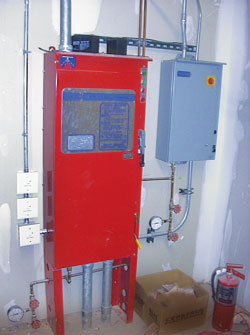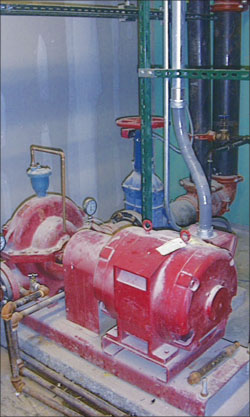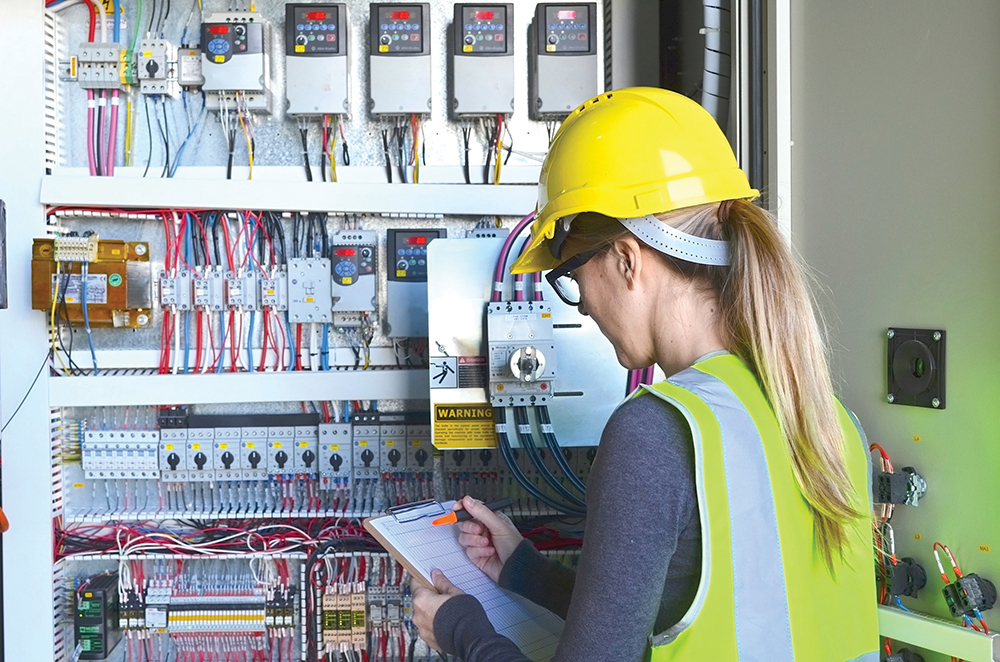The services of the inspection community are of utmost importance to maximize safety and reliability. This is especially true when the inspector serves as the AHJ for the installation. This article addresses two such instances pertaining to fire pumps, one is covered by theNational Electrical Code(NEC) in 695.4 and the other in the National Fire Protection Association (NFPA) Standard for the Installation of Stationary Pumps for Fire Protection, NFPA 20.
In the interest of maximizing reliability, NFPA 20 has always preferred the direct connection which is to bring the supply conductors directly to the fire pump controller as described in NEC 695.4(A). However, NEC 695.4(B) does permit a supervised “single disconnecting means and associated overcurrent protective device” installed in these supply conductors. Based on a recent revision in 9.2.3.4, NFPA 20 (2010), NEC 695.4(B), which is extracted out of NFPA 20, will require the overcurrent protective device to be rated based on the LRC (locked rotor current) of the fire pump motor. Additionally, per NEC 700.27, “Emergency system(s) overcurrent devices shall be selectively coordinated with all supply side overcurrent protective devices.” In other words, a pump room fault is to be cleared by the fire pump controller circuit breaker rather than by an upstream overcurrent protective device which may very well be inaccessible for reset or fuse change during a fire. It is important that this coordination is based on the recognition that the circuit breaker in the fire pump controller is “set” to trip differently from protection values contained in NEC 430 covering ordinary motor circuits. Section 10.4.3.3 of NFPA 20 (2010) provides the electrical characteristics of the circuit breaker contained in the fire pump controller as follows:
1. Continuous current rating not less than 115% of rated full-load current of the fire pump motor
2. Overcurrent-sensing elements of the non-thermal type
3. Instantaneous short-circuit overcurrent protection
4. An adequate interrupting rating to provide the suitability rating 10.1.2.2 of the controller
5. Capability of allowing normal and emergency starting and running of the motor without tripping
6. An instantaneous trip setting of not more than 20 times the full-load current of the fire pump motor

Photo 1. As codes and standards get revised every Code cycle, evidence suggests that there is ever greater reliance upon the “AHJ Industry” for code compliance assurance. This is no more critical than in fire protection. This article draws attention to two requirements that affect reliability, safety and performance under fire conditions.

Photo 2. Typical electric fire pump.
Thus it should be noted that the requirement for selective coordination of that “one and only” upstream overcurrent protective device requires careful attention by the system designers and inspection authorities.
The second instance concerns limited service controllers (LSCs), which, in accordance with 10.7.1 of NFPA 20 (2010), can only be used as a fire pump controller when acceptable to the AHJ. This type of controller differs from fire pump controllers by the following “limitations”:
a. The circuit breaker is of the thermal-magnetic type thus requiring cooling time in order to reset.
b. The trip times can vary drastically due to commercial circuit breaker sizing gradations.
c. LSCs have no isolating switches which may require disconnection by the utility to affect maintenance (increased out of service time).
d. LSCs are restricted to 30 HP max, 600 V max, across-the-line (ATL) starting/running.
It is also important to note that Factory Mutual approvals will no longer permit the use of LSCs as fire pump controller in any FM-insured property.
It is recommended that the AHJ industry keep the above limitations in mind and act most judiciously in their acceptability decisions. In those installations where one or more of these limitations cannot be tolerated, a “full-service” fire pump controller should be used. Full-service fire pump controllers are commercially available for all HPs and voltages covered by LSCs.














Find Us on Socials